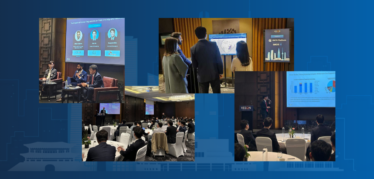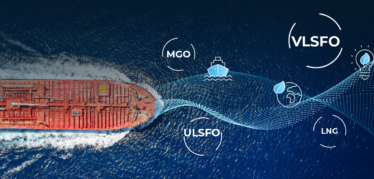Successfully adopting a new commercial maritime shipping solution for your organization requires significant planning, investment, and cross-functional buy-in, making it critical to engage key stakeholders early and often. In fact, it is estimated that 50–90% of strategic initiatives fail during implementation.
In addition to accelerating the adoption of a new solution, stakeholder buy-in helps ensure a smooth and successful implementation by laying the groundwork for strong utilization as early as possible. But gaining the buy-in of key stakeholders, each of whom has their own responsibilities and priorities, can be easier said than done.
Let’s discuss four ways to help get your primary stakeholders on board.
1. Talk to stakeholders early.
A key component of stakeholder buy-in is early engagement. Holding discussions with stakeholders from the earliest stages of the planning process can help sow the seeds for buy-in by building an understanding of cross-functional needs, surfacing key business goals, and collaborating to identify one, overarching SMIT (single most important thing) that will help guide your business case.
Both end users and key decision makers should be briefed on the insights you’ve generated around the need for a new commercial solution and solicited for feedback. Maintaining a high level of communication and collaboration from the start gives stakeholders a sense of ownership throughout the solution selection and adoption process and they will be more likely to become active users and solution.
2. Define what success looks like.
In addition to shaping solution requirements, make sure to ask your stakeholders how they define success for the new solution in their respective functional areas. Each of your key stakeholders has a distinct vantage point and will define success differently.
Conversations with your stakeholders will enable you to evangelize the solution more effectively, while also helping you to formulate key metrics and objectives that will be used to evaluate the solution once it is implemented. For instance, perhaps stakeholder conversations highlighted an urgent need to enhance environmental sustainability. As you begin building your case, you can set intentional goals around reducing CO2 emissions by more effectively understanding emissions and bunker consumption to enable more sustainable decision making. As you begin to assess your progress toward measurable goals, make sure to build-in regular feedback loops and touch points with your stakeholders to maintain essential alignment around key objectives.
3. Create a practical implementation plan.
As you create a clear and logical plan for implementation, make sure to communicate with stakeholders to understand their needs and how the solution will fit into the context of their daily workflows. Even the most powerful solution will fail to drive results if it is not usable and practical from the perspective of its daily users.
Viewing the solution through the eyes of your key stakeholders will enable you to ensure your implementation plan is reflective of their realities. It will help you to surface and address potential roadblocks proactively, empower users with the tools they need to succeed, and form an effective roadmap for training and continuing education. Most importantly, if your stakeholders see themselves in your implementation plan, they will be more passionate about making the solution a success.
4. Present your case in a compelling way.
Once your business case has been formed, it is important to present it to your key stakeholders in a way that effectively expresses its applicability to them. How have you taken your previous conversations with them to heart? How will the solution make their lives easier? How will you ensure it is easy for them to embrace the solution in their daily work? Your business case should provide resounding answers to these questions.
When sharing your business case, be sure to tell the story in an engaging and compelling way. Harness videos, presentations, visuals, checklists, and any other high-utility tools that will make it easier to absorb, understand, and share. Remember to incorporate key metrics about the partner and platform you are considering, such as the longevity, size, and satisfaction of its client community. In addition, include a well-crafted, high-impact summary that highlights the key points of the business case and core advantages of the solution for your diverse stakeholders.
Securing stakeholder buy-in.
Once you have presented a compelling business case and have obtained the buy-in you need, don’t lose momentum—build in regular touchpoints to ensure continued progress and surface opportunities for improvement. After all, your key stakeholders are core to the success of your business, so they will be integral to the success of your new solution as well.
As the maritime world’s most dynamic platform for commercial freight and fleet management, the Veson IMOS Platform delivers comprehensive capabilities to serve each stakeholder’s unique functional requirements, maximize utilization, and help your business address its key objectives. To help you get started, we will build you a custom Business Case based on your organizations needs and objectives. To receive your business case, fill out our short, 3 step assessment today.



 Giftson Eliyesar
Giftson Eliyesar
 Hongbeom Park
Hongbeom Park
 Oliver Kirkham
Oliver Kirkham